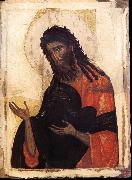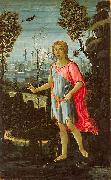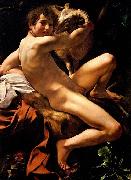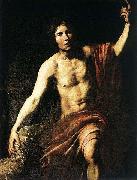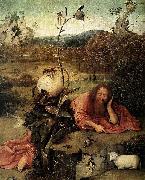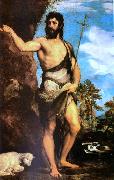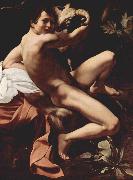Wholesale Oil Painting No Minimum |
|||||||||||
|
|
|||||||||||

|
|||||||||||
|
|
|
||||||||
|
|
||||||||
Saint John the Baptist
Saint John the Baptist Painting ID:: 1086 |
Musee du Louvre, Paris Musee du Louvre, Paris |
|||||||
|
|
||||||||
|
|
||||||||
|
|
Saint John the Baptist
Saint John the Baptist Painting ID:: 41805 |
mk165
Egg tempera on plaster on wood
87.5x66cm
mk165 Egg tempera on plaster on wood 87.5x66cm |
||||||
|
|
||||||||
|
|
||||||||
|
|
Saint John the Baptist
Saint John the Baptist Painting ID:: 41841 |
mk165
93x50cm
From the Church of the Exaltation of the Holy Cross
mk165 93x50cm From the Church of the Exaltation of the Holy Cross |
||||||
|
|
||||||||
Hans MemlingNetherlandish Northern Renaissance Painter, ca.1435-1494 Born in Seligenstadt, near Frankfurt in the Middle Rhein region, it is believed that Memling served his apprenticeship at Mainz or Cologne, and later worked in the Netherlands under Rogier van der Weyden (c. 1455?C1460). He then went to Bruges around 1465. There is an apocryphical story that he was a wounded at the Battle of Nancy, sheltered and cured by the Hospitallers at Bruges, and that to show his gratitude he refused payment for a picture he had painted for them. Memling did indeed paint for the Hospitallers, but he painted several pictures for them, in 1479 and 1480, and it is likely that he was known to his patrons of St John, prior to the Battle of Nancy. Memling is connected with military operations only in a distant sense. His name appears on a list of subscribers to the loan which was raised by Maximilian I of Austria, to defend against hostilities towards France in 1480. In 1477, when he was incorrectly claimed to have been killed, he was under contract to create an altarpiece for the gild-chapel of the booksellers of Bruges. This altarpiece, under the name of the Seven Griefs of Mary, is now in the Gallery of Turin. It is one of the fine creations of his more mature period. It is not inferior in any way to those of 1479 in the hospital of St. John, which for their part are hardly less interesting as illustrative of the master's power than The Last Judgment which can be found since the 1470s in the St. Mary's Church, Gda??sk. Critical opinion has been unanimous in assigning this altarpiece to Memling. This affirms that Memling was a resident and a skilled artist at Bruges in 1473; for the Last Judgment was undoubtedly painted and sold to a merchant at Bruges, who shipped it there on board of a vessel bound to the Mediterranean, which was captured by Danzig privateer Paul Beneke in that very year. This purchase of his pictures by an agent of the Medici demonstrates that he had a considerable reputation. |
||||||||
|
|
||||||||
|
|
Saint John the Baptist
Saint John the Baptist Painting ID:: 42851 |
mk170
circa 1475
Oil on oak
57.5x17.3cm
mk170 circa 1475 Oil on oak 57.5x17.3cm |
||||||
|
|
||||||||
JACOPO del SELLAIOItalian painter, Florentine school (1442-1493) |
||||||||
|
|
||||||||
|
|
Saint John the Baptist
Saint John the Baptist Painting ID:: 70490 |
Date c. 1480
Medium Oil on panel
Dimensions Expression error: Missing operand for *52 ?? 33 cm
Date c. 1480 Medium Oil on panel Dimensions Expression error: Missing operand for *52 ?? 33 cm |
||||||
|
|
||||||||
CaravaggioItalian Baroque Era Painter, ca.1571-1610 Italian painter. After an early career as a painter of portraits, still-life and genre scenes he became the most persuasive religious painter of his time. His bold, naturalistic style, which emphasized the common humanity of the apostles and martyrs, flattered the aspirations of the Counter-Reformation Church, while his vivid chiaroscuro enhanced both three-dimensionality and drama, as well as evoking the mystery of the faith. He followed a militantly realist agenda, rejecting both Mannerism and the classicizing naturalism of his main rival, Annibale Carracci. In the first 30 years of the 17th century his naturalistic ambitions and revolutionary artistic procedures attracted a large following from all over Europe. |
||||||||
|
|
||||||||
|
|
Saint John the Baptist
Saint John the Baptist Painting ID:: 86181 |
1602(1602).
Medium Oil on canvas.
Dimensions 132 x 97 cm (52 x 38.2 in).
cyf 1602(1602). Medium Oil on canvas. Dimensions 132 x 97 cm (52 x 38.2 in). cyf |
||||||
|
|
||||||||
CaravaggioItalian Baroque Era Painter, ca.1571-1610 Italian painter. After an early career as a painter of portraits, still-life and genre scenes he became the most persuasive religious painter of his time. His bold, naturalistic style, which emphasized the common humanity of the apostles and martyrs, flattered the aspirations of the Counter-Reformation Church, while his vivid chiaroscuro enhanced both three-dimensionality and drama, as well as evoking the mystery of the faith. He followed a militantly realist agenda, rejecting both Mannerism and the classicizing naturalism of his main rival, Annibale Carracci. In the first 30 years of the 17th century his naturalistic ambitions and revolutionary artistic procedures attracted a large following from all over Europe. |
||||||||
|
|
||||||||
|
|
Saint John the Baptist
Saint John the Baptist Painting ID:: 86454 |
1602(1602).
Medium Oil on canvas.
Dimensions 129 x 94 cm (50.8 x 37 in).
cyf 1602(1602). Medium Oil on canvas. Dimensions 129 x 94 cm (50.8 x 37 in). cyf |
||||||
|
|
||||||||
VALENTIN DE BOULOGNEFrench Baroque Era Painter, ca.1594-1632 |
||||||||
|
|
||||||||
|
|
Saint John the Baptist
Saint John the Baptist Painting ID:: 90525 |
Oil on canvas, 130 x 90 cm
1628-1630
cjr Oil on canvas, 130 x 90 cm 1628-1630 cjr |
||||||
|
|
||||||||
Hieronymus BoschNetherlandish Northern Renaissance Painter, ca.1450-1516, Flemish painter. His surname was originally van Aeken; Bosch refers to 's Hertogenbosch, where he was born and worked. Little is known of his life and training, although it is clear that he belonged to a family of painters. His paintings, executed in brilliant colors and with an uncanny mastery of detail, are filled with strangely animated objects, bizarre plants and animals, and monstrous, amusing, or diabolical figures believed to have been suggested by folk legends, allegorical poems, moralizing religious literature, and aspects of late Gothic art. Such works as the Garden of Earthly Delights (Prado) appear to be intricate allegories; their symbolism, however, is obscure and has consistently defied unified interpretation. Bosch clearly had an interest in the grotesque, the diabolical, the exuberant, and the macabre. He also may have been the first European painter to depict scenes of everyday life, although often with a strong element of the bizarre. King Philip II of Spain collected some of his finest creations. The Temptation of St. Anthony (Lisbon) and The Last Judgment were recurring themes. Other examples of his art may be seen in the Escorial and in Brussels. Examples of the Adoration of the Magi are in the Metropolitan Museum and in the Philadelphia Museum, which also has the Mocking of Christ. Bosch, who deeply influenced the work of Peter Bruegel the Elder, was hailed in the 20th cent. as a forerunner of the surrealists, and his work continues to influence many contemporary artists. |
||||||||
|
|
||||||||
|
|
Saint John the Baptist
Saint John the Baptist Painting ID:: 92881 |
between 1489(1489) and 1499(1499)
Medium oil on panel
Dimensions Height: 49 cm (19.3 in). Width: 40.5 cm (15.9 in).
cjr between 1489(1489) and 1499(1499) Medium oil on panel Dimensions Height: 49 cm (19.3 in). Width: 40.5 cm (15.9 in). cjr |
||||||
|
|
||||||||
TitianItalian High Renaissance Painter, ca.1485-1576 Italian painter active in Venice. As a young man he was taught by the Bellini family and worked closely with Giorgione. His early works are so similar in style to Giorgione's as to be indistinguishable, but soon after Giorgione's early death Titian established himself as the leading painter of the Republic of Venice. Among his most important religious paintings is the revolutionary and monumental Assumption (1516 ?C 18) for Santa Maria dei Frari, in which the Virgin ascends to heaven in a blaze of colour accompanied by a semicircle of angels. Titian was also interested in mythological themes, and his many depictions of Venus display his work's sheer beauty and inherent eroticism. Bacchus and Ariadne (1520 ?C 23), with its pagan abandon, is one of the greatest works of Renaissance art. Titian was sought after for his psychologically penetrating portraits, which include portrayals of leading Italian aristocrats, religious figures, and Emperor Charles V. He reached the height of his powers in The Rape of Europa (c. 1559 ?C 62), one of several paintings done for Philip II of Spain. He was recognized as supremely gifted in his lifetime, and his reputation has never declined. |
||||||||
|
|
||||||||
|
|
Saint John the Baptist
Saint John the Baptist Painting ID:: 94762 |
1540
Type oil on canvas
Dimensions 201 cm x 134 cm (79 in x 53 in)
1540 Type oil on canvas Dimensions 201 cm x 134 cm (79 in x 53 in) |
||||||
|
|
||||||||
CaravaggioItalian Baroque Era Painter, ca.1571-1610 Italian painter. After an early career as a painter of portraits, still-life and genre scenes he became the most persuasive religious painter of his time. His bold, naturalistic style, which emphasized the common humanity of the apostles and martyrs, flattered the aspirations of the Counter-Reformation Church, while his vivid chiaroscuro enhanced both three-dimensionality and drama, as well as evoking the mystery of the faith. He followed a militantly realist agenda, rejecting both Mannerism and the classicizing naturalism of his main rival, Annibale Carracci. In the first 30 years of the 17th century his naturalistic ambitions and revolutionary artistic procedures attracted a large following from all over Europe. |
||||||||
|
|
||||||||
|
|
Saint John the Baptist
Saint John the Baptist Painting ID:: 96761 |
circa 1602(1602).
Medium oil on canvas.
Dimensions 132 X 97 cm
cyf circa 1602(1602). Medium oil on canvas. Dimensions 132 X 97 cm cyf |
||||||
|
|
||||||||
|
Caravaggio Italian Baroque Era Painter, ca.1571-1610 Italian painter. After an early career as a painter of portraits, still-life and genre scenes he became the most persuasive religious painter of his time. His bold, naturalistic style, which emphasized the common humanity of the apostles and martyrs, flattered the aspirations of the Counter-Reformation Church, while his vivid chiaroscuro enhanced both three-dimensionality and drama, as well as evoking the mystery of the faith. He followed a militantly realist agenda, rejecting both Mannerism and the classicizing naturalism of his main rival, Annibale Carracci. In the first 30 years of the 17th century his naturalistic ambitions and revolutionary artistic procedures attracted a large following from all over Europe. Saint John the Baptist circa 1602(1602). Medium oil on canvas. Dimensions 132 X 97 cm cyf |
||||||||
|
|
||||||||
|
Prev Next
|
||||||||
|
|
||||||||
|
Related Paintings to Caravaggio :. |
||||||||
|
|
||||||||
|
CONTACT US |


